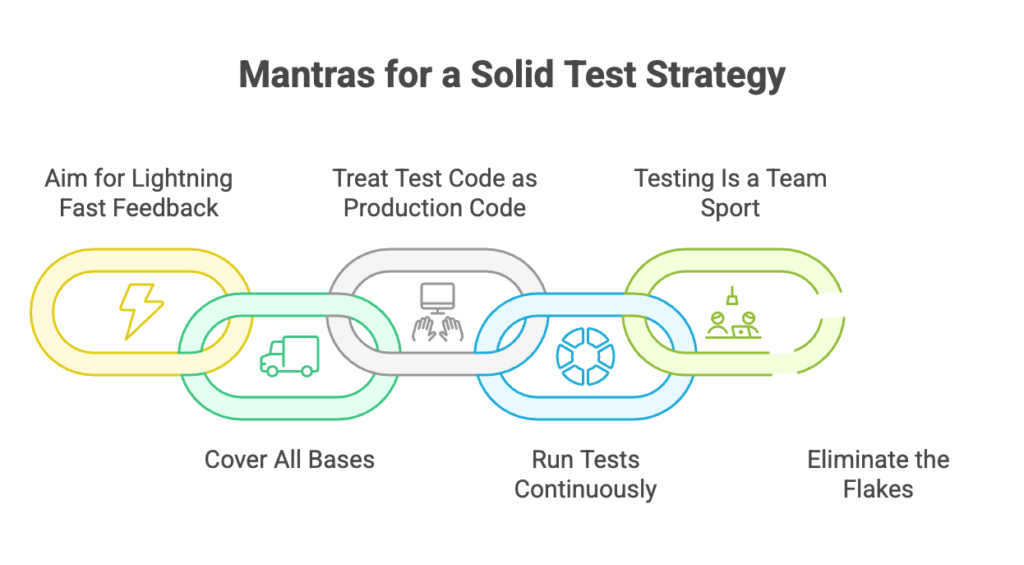Mantras for a Solid Test Strategy
A solid test strategy is critical for delivering high-quality software with speed and confidence. It lays the foundation for frequent, reliable production releases. Here are the essential mantras to guide your team toward a robust and effective test strategy.

1. “Feedback Should Be Lightning Fast”
The faster your tests, the quicker your feedback. All Unit tests should run in seconds, and even full test suites should complete within the time it takes for a coffee break. Long-running tests discourage frequent execution, delaying the discovery of issues and slowing down development. Embrace speed as the core enabler of agility and confidence.
2. “Cover All Bases”
A comprehensive test strategy leaves no stone unturned. Include a mix of test types to ensure every aspect of the system is validated:
- Unit Tests for individual components.
- Integration Tests for interactions between components.
- End-to-End Tests for real user flows.
- Cross-Functional Tests for performance, security, and compliance.
Diverse testing ensures that when your test suite turns green, you can deploy with real confidence.
3. “Treat Test Code as Production Code”
Your test code deserves the same care as your production code. Write clean, modular, and readable tests. Use practices like refactoring and clean coding principles to ensure your tests evolve with your codebase. Maintainability is key—tests should empower your team, not slow them down.
4. “Run Tests Continuously”
A modern test strategy relies on automation. Integrate your tests into your continuous integration (CI) and continuous deployment (CD) pipelines. Automated tests that run at key checkpoints provide consistent feedback and minimize manual intervention. Make automation the backbone of your development lifecycle.
5. “Testing Is a Team Sport”
Testing is not the job of a single role. Developers should own unit and integration tests, while testers focus on end-to-end and exploratory testing. Aligning responsibilities within the team ensures comprehensive coverage and fosters a shared sense of ownership. A great test strategy is built collaboratively.
6. “Eliminate the Flakes”
Flaky tests—those that fail or pass inconsistently—are a surefire way to erode trust in your test suite. Ensure every test failure indicates a real issue in the codebase. Organize and name your tests thoughtfully to make it easy to identify gaps. Reliability and consistency are non-negotiable.
Living the Mantras
By following these mantras, your team can craft a test strategy that is fast, maintainable, reliable, and aligned with business objectives. A solid test strategy empowers your team to deliver high-quality software at speed, making it a cornerstone of modern software development.
Subscribe to the Next Iteration Newsletter to get members only content and insights directly in your inbox!
